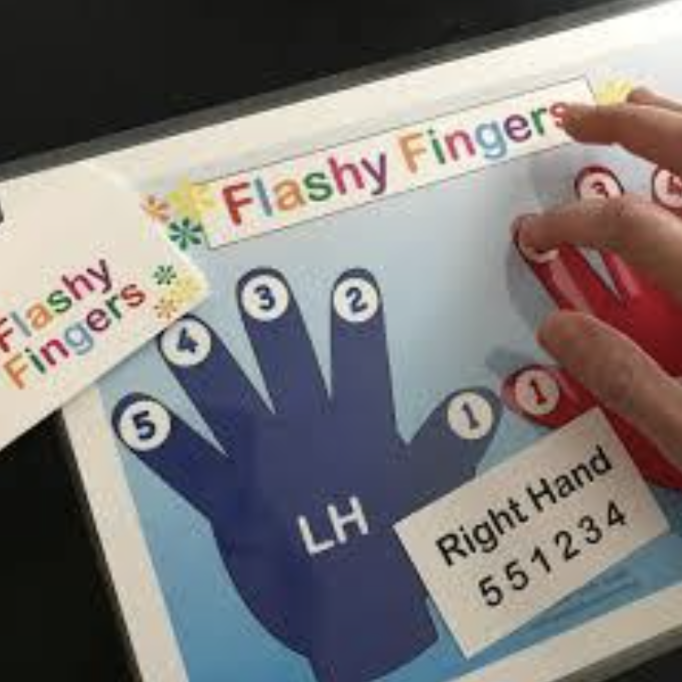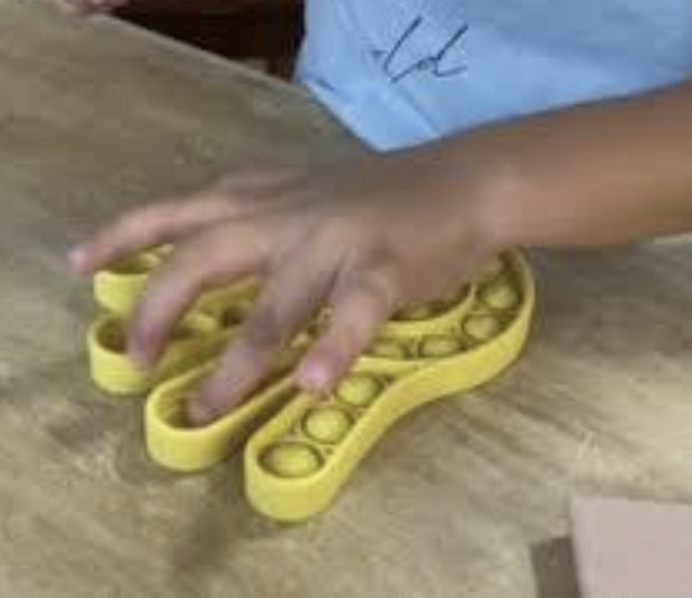Apr 6
/
Olivia Adams
Supporting Fine Motor Skills in Music Lessons
Learning to play any instrument as a child requires significant and consistent exercise of fine and gross motor skills, and often during critical stages of childhood development. The required effort and skills necessary for playing an instrument may prove more difficult when global developmental delay or other diagnoses are present. However, most students, regardless of diagnoses, may require increased supporting activities to help them develop fine and gross motor skills in the early years of music lessons. Research shows that music lessons can be used to support fine motor skills by engaging individuals in similar skill development in their music education. This blog will explore some different music activities to help support and engage fine motor skill development in your students.
What are fine motor skills?
Fine motor skills generally refer to the precise use of the small muscles in the hands to perform tasks. While we think of fine motor skills as the precise use of our fingers, our fine motor skill development begins even before that, when our eyes start to track where objects are, and the arm, wrist, and finger extension performed to grab the object. We use fine motor skills in our daily life to perform tasks like writing, feeding, brushing our teeth, putting on clothes. These fine motor skills become more refined as we develop. Areas of fine motor development in children include skills such as grip strength, grasp, finger isolation, wrist and finger extension, wrist rotation, transferring an object from one hand to another, the ability to release an object, and the ability to use both sides of the body simultaneously or alternating, and even pre-printing skills, to name only a few. Some diagnoses that can affect the development of fine motor skills in students include cerebral palsy, muscular dystrophy, sensory processing disorder, Down syndrome, ADHD, autism, dysgraphia and dyspraxia. Regardless of diagnoses, the development of fine motor skills is crucial in growing musicians and can be supported through music lesson activities.
The following activities look to strengthen and refine some of the fine motor skills that we use in music lessons.
1. Tension in the hand muscles and grip
This is something we may see in students with high muscle tone , such as cerebral palsy or muscular dystrophy that affects the hands, or arthritis. All of these could lead to stiffness, pain, or limited movement which can affect a student’s ability to play their instrument. One fine motor skill that can help relax the hand muscles is using a raking motion.
Music Lesson Activity: Have the student improvise on a pentatonic lap harp, or open guitar or ukelele strings while the teacher accompanies on the piano. Goals such as tempo and rhythmic awareness can be developed through improvising on an auxiliary instrument.
Support Tool: Adaptive Guitar Fret Tool
Image Source: van der Wel, R. Adaptive Guitar teaching method from My Breath My Music. mybreathmymusic.com.
If you have a guitar or ukelele student who struggles with muscle exhaustion or muscle tension, consider using an adaptive guitar fret tool such as the one demonstrated in the picture. This allows them to use the handle to clamp strings on the fretboard while the other plays the strings like a lap harp.
2. Independent use of fingers
The independent use of fingers or the isolation of individual finger movement is an important skill for playing many instruments. The finger independence and dexterity will become more refined as the student develops. Incorporating finger-play songs that allow the student to begin use their fingers independently can help support this skill.
Finger Independence Activity (early childhood): Incorporate some fingerplay songs into your music lessons to help encourage independent use of individual fingers. Some favorites are “One Little Finger” from Super Simple Songs, “Open, Shut Them” from Super Simple Songs, 10 Little Fingers from Kiboomers, or singing “The Itsy Bitsy Spider” while a student does a spider crawl up their arm as they sing.
Finger Independence Activity (school-aged children): Some of my favourite ways to help my students practice finger dexterity and quicker finger movement is through the finger number games created by Anne Crosby Gaudet in the Musical Discoveries Shop
- Flashy Fingers contains a game board of two hands and game cards with different finger number combinations. You can adapt the board for your instrument’s fingering and create finger number cards based on tricky fingering in your student’s music.

Image Source: Crosby Gaudet, A. Flashy Fingers. https://musicdiscoveries.shop/products/flashy-fingers.
3. Collapsing Knuckles
This is something that is developed over time and can be worked on and supported through different pincer grasp activities. While the pincer grasp is something that develops in very early stages of childhood development, the strength and fine motor control of the grasp builds throughout childhood development. Working on the pincer grasp helps to develop the fine motor control that is used to play the piano without collapsed knuckles. If you find that your student struggles with keeping a rounded fingertip, you may want to use pincer grasp activities to help support their fine motor development. This latent skill can be worked on covertly while working on other activities, such as note-naming activities, allowing you to work on two skills in one.
Music Lesson Activity: Reinforce the note names or solfege syllables through labeling clothespins with the musical alphabet and having the student clip the clothespins to a piece of cardstock. This activity can be adapted to incorporate sharps and flats as the student learns different five-finger scale patterns. Challenge the student to do it with all the finger joints rounded.
Music Lesson Activity: Reinforce the note names or solfege syllables through labeling clothespins with the musical alphabet and having the student clip the clothespins to a piece of cardstock. This activity can be adapted to incorporate sharps and flats as the student learns different five-finger scale patterns. Challenge the student to do it with all the finger joints rounded.
Music Lesson Activity: Using a rounded hand position and a “Pop-it,” call out finger number combinations. The student then “pops” the pattern of finger numbers you call out using a rounded knuckle.

Image Source: Polykarpou, T. (2022). “Pop Its for Piano Lessons” from Music Teaching Inspirations. musicteachinginspirations.com/pop-its-for-piano-lessons.
4. Simultaneous use of both hands to perform different tasks.
Using both hands independently of one another to accomplish different tasks, such as hands together playing at the piano or playing a drum kit, is a challenge for many children regardless of latent skills or other diagnoses. It is important for a student to be able to use the hands independently at the midline, differentiating left- and right-hand use, before pieces that require crossing the midline (music with hand crossing) is introduced.
Music Lesson Activity: Have the student tap whole notes in one hand while tapping a quarter note pulse in the other and then switch tasks between the hands. Make the rhythmic combinations more complicated as the student grows in hand independence. Learning rhythms independently in gross motor movement is a way of easing the transition of the concept into the fine motor skills.
Music Lesson Activity: Having students play a melody line on small handbells helps to develop the simultaneous independent use of both hands, while also working on music reading skills. This can be easily adapted to play with lead sheets or chord charts as the teacher plays the lead sheet, the student can play the roots of the chords on handbells. I enjoy using the Wunderkeys lead sheets for this activity. Additionally, the use of the palmer grasp when playing the handbells helps to develop the inner hand muscles used for a rounded bridge when playing the piano or supporting an instrument while playing such as used for brass, string, and woodwind instruments. This activity additionally works on their ensemble skills while also working on fine and gross motor skills!
These are just a few of the many ways that we can support our students motor development through music. The activities can be modified and developed depending on the needs of your students and the instruments you teach. I would love to know the activities you use to help support your student’s fine motor skills.
Happy Teaching!
Featured links
Contact Us
-
1002 Beaverbrook Road, Suite 13Kanata, ON K2K 1L1
-
jeff@lotuscentre.net
-
(613) 801-0031
Copyright © 2025 by Lotus Centre for Special Music Education.
Our programs are funded in part by the Azrieli Foundation and the Ottawa Community Foundation



